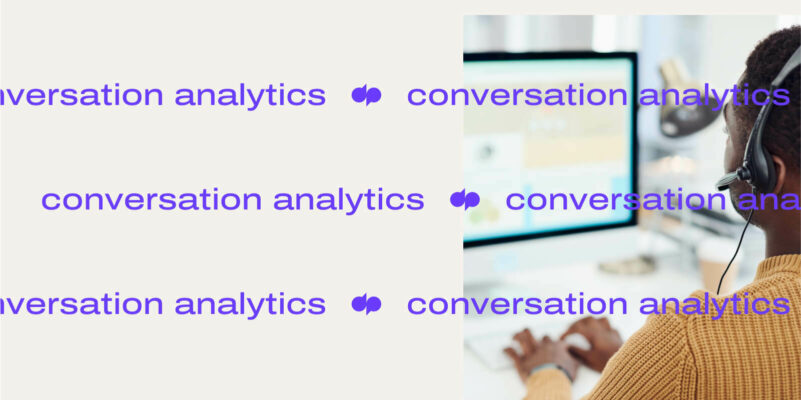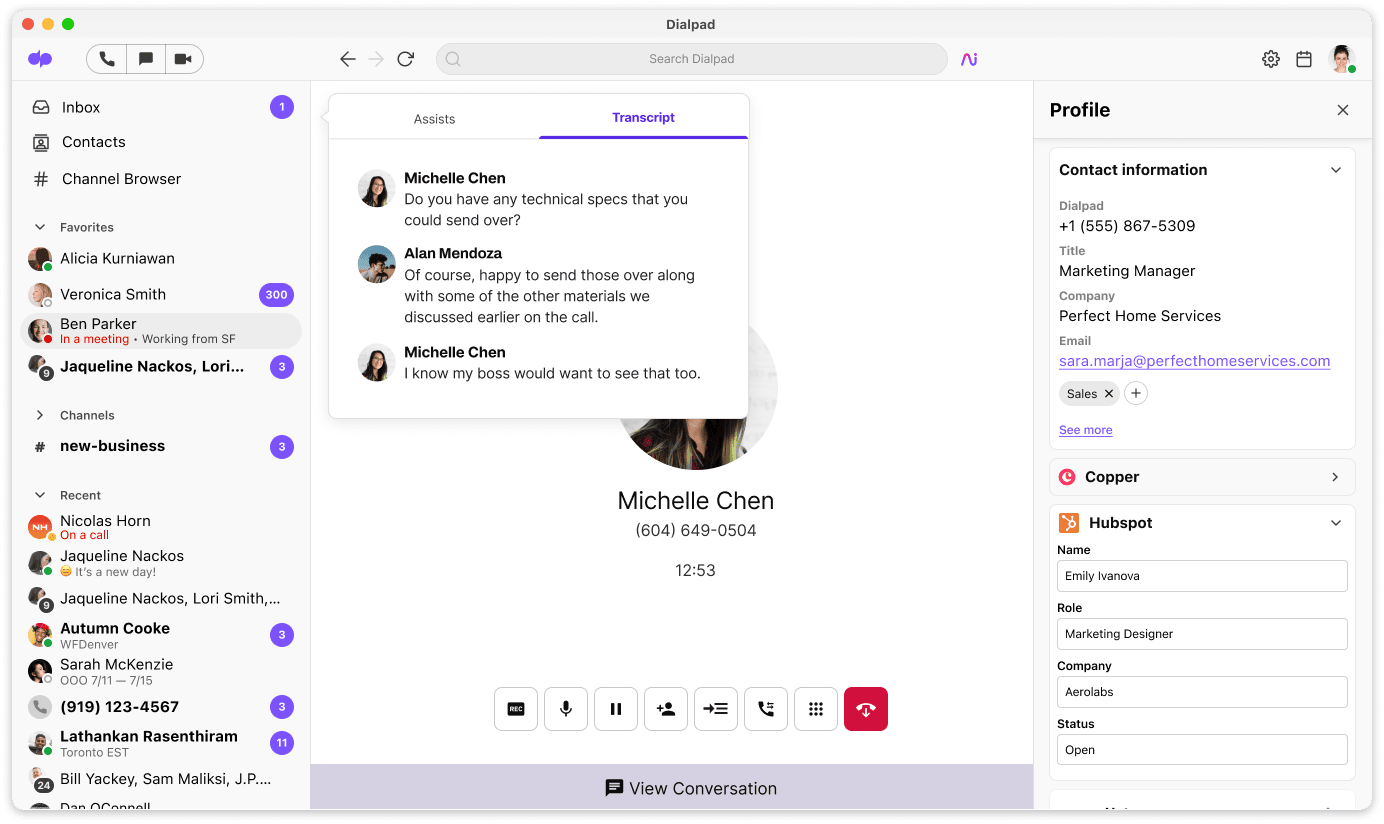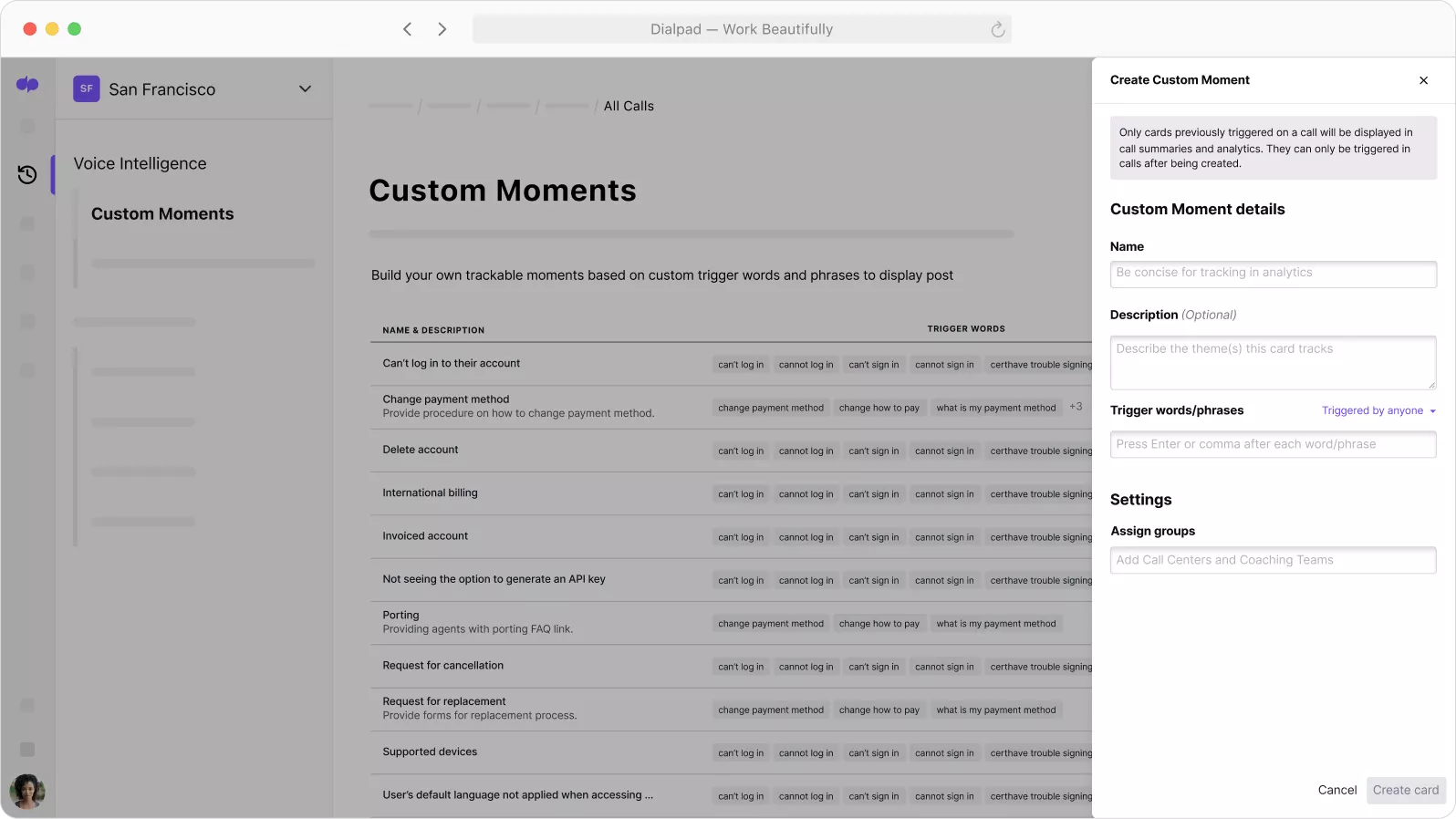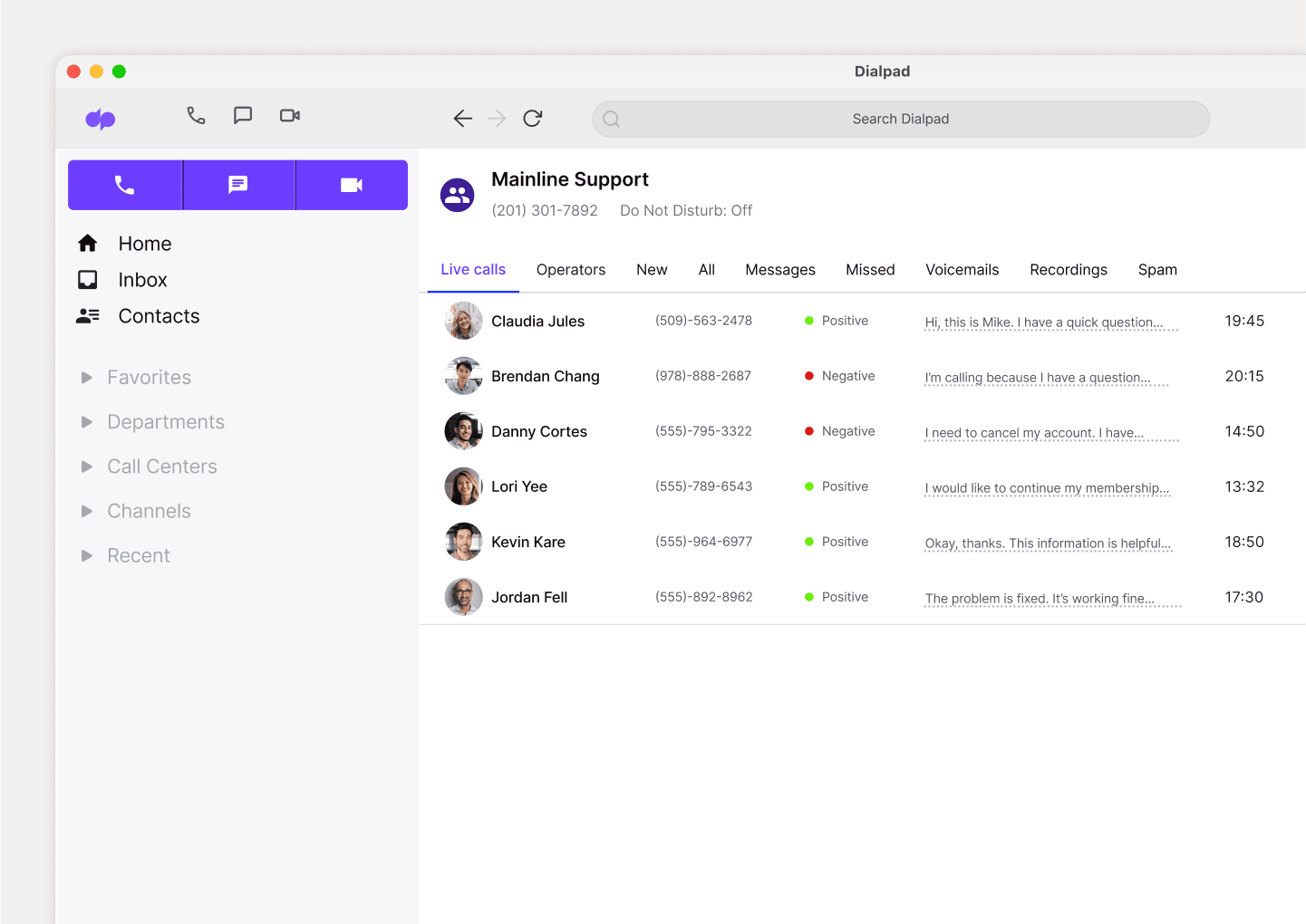A primer on conversation analytics

Businesses love data, and nothing generates quite as much—or as valuable—data as phone calls with your customers.
The only problem? That data tends to come in the form of recorded phone calls, which aren’t exactly easy to skim-read (and sadly don’t come with a SparkNotes version).
That’s where conversational AI for customer service comes in. Conversation analytics AI makes it easy to turn all that raw data into digitally accessible and analyze-able content, making it a great investment for your business.
What are "conversation analytics?"
Basically, conversation analytics is the term used to describe the process of using natural language processing to extract data from human-to-human conversations. This conversation data can then be processed by AI algorithms—and used by you.
Think of it as a computer program that’s trained to understand the natural patterns of human speech and the words being said, and then translating that into something that can be used.
Conversational analytics come with many benefits. They’re incredibly helpful in contact centers and call centers, which makes sense considering that’s where most customer-company conversations are going to be happening.
How do conversation analytics work?
The simple explanation is essentially that a program takes the conversation itself and, using NLP to pre-process the raw conversations, converts it into data that can be analyzed by algorithms.
So how does NLP actually work?
NLP is a type of technology that combines a few different fields of study, including linguistics, computer sciences, and artificial intelligence (AI). It was created to process all natural language—for us specifically, we use it to process spoken language. (Learn more about NLP in customer service.)
Conversation analytics is much more sophisticated than just analyzing one-way speech (such as lectures) or written text (such as news articles). That’s because two-way casual communication brings colloquial language, social-linguistic diversity, variability and context.
At Dialpad, the AI-based NLP program that handles conversation analytics is built into our AI technology.
Dialpad Ai can transcribe phone calls in real-time with an extremely high level of accuracy, and goes one step further to provide actual speech analytics that you can use to monitor rep or agent performance and offer support if they need it—while they’re on the call!

Fun fact: Dialpad also integrates with CRMs and other popular software to give you full telephony functionality—and real-time transcriptions—right from inside those tools without making you toggle between windows and tabs. Here’s Zendesk as an example:

2 common difficulties in analyzing conversations
Subjectivity of language
One of the fun parts of analyzing language? People use idioms and figures of speech quite a bit. We exaggerate and give emotionally-based descriptions, and we make jokes or sarcastic comments. All of those are examples of the subjectivity of language.
That can be a major obstacle for AI programs. If someone says that they love working overtime and never taking holidays, we’d instantly know they were kidding… but a machine might not.
Keywords are limited
A useful part of call analytics is the ability to cross-reference keywords with other details—for example, if a customer conversation includes the phrase “social media,” the agent might understand that they should share the company’s social media usernames or handles.
In the field of conversational analytics, keywords help us find useful connections between what’s being said in a conversation and which resources in the database can help agents.
The trouble with keywords in conversations is that they’re limited. Phone conversations won’t always organically touch on set keywords, and it’s difficult to compile endless lists of relevant keywords when conversations can go in any direction.
For example, if you’re a marketer working at a real estate brokerage, you’ll likely have industry-specific keywords and acronyms that are unique to real estate marketing, home-buying, and mortgages, which would make conversation analytics a bit more difficult to gather. (The AI would have to be taught specifically to pick up on those unique terms.)
Benefits of using conversation analytics: 6 ways to use them
1. Increase sales and conversion rates
For sales teams that work the phones, having insights into customer conversations is crucial—and speech analytics can be your best friend. (And it can help inform your marketing strategy too.)
Traditionally, call recordings were the main way to get these insights—you’d record all your calls, and go through them one by one, listening from beginning to end to extract learning.
But with conversation analytics and sales AI, you don’t have to do that. For example, I mentioned earlier that Dialpad can transcribe phone calls in real time. But what if Dialpad could also tell your sales team which competitors keep coming up in conversations with prospects? What if you could see which features or products your prospects ask your reps about most frequently?
Vi can do that. Let’s say you want more insights about Competitor A and find out what customers think of them compared to your company. All you have to do is create a "Custom Moment" in Dialpad Ai Contact Center and set the keyword trigger to Competitor A’s name:

This Custom Moment will then track how frequently Competitor A’s name comes up in your calls, and you can also dig into those specific call recordings or transcriptions to understand what’s being said there.
2. Get more insights into the customer experience
Despite how important it is to understand the customer experience, many large businesses struggle with securing real-time insights into exactly this:
By using your analytics tools to get these insights, you’re giving yourself a leg up on the competition. You’re also helping your business understand every step of the customer journey in depth, with particular focus on how customer sentiment changes throughout the journey.
Conversation analytics lets you learn from customer interactions, which gives actionable insights into your customer experience—including both your on-the-phone experience and also your digital experience!
3. Monitor agent performance in real time
Being able to help support agents in real time is powerful because not only can they learn how to approach problems in the moment, it’s also a better experience for your customers than having the agent fumble the call and then having to call the customer back with a resolution later after they’ve asked someone for help.
A good conversation analytics platform should be able to help flag issues and get managers’ attention. For example, Dialpad’s live sentiment analysis can analyze a conversation and determine if the sentiment is positive or negative—a contact center supervisor can see all the active calls their agents are on, with that sentiment, in a clear birds-eye view.
This lets them quickly see if there are any negative calls, scan the real-time transcript first to get more context, then decide if they need to jump on the call to support an agent:

4. Glean more insights for product development
In a perfect world, all marketing campaigns would be met with success, everyone would love your product, and you’d never get any complaints.
We may not live in that world—but with conversation analytics, you can get closer to it.
For instance, if you’re diligently doing call tracking or monitoring, you can identify keyword topics that come up more easily and share information with other teams (like Product or Engineering) that would find it useful to know what customers like or dislike about particular products or features.
5. Reduce customer churn
Customer churn is, well, the opposite of customer success. The lower you can get your churn rate, the better—and again, conversational analytics can be super helpful here.
For example, if you’re noticing a spike in customers calling to ask for refunds, you can track every time “refund” comes up in a Custom Moment in Dialpad.
Then, you can look at the transcripts or call recordings for these conversations—and the call before this one, if that customer has called you before—to understand the events that led to the refund request.
From there, you can use these insights to see if there are common issues that cause your customers to churn (and make a plan for tackling them).
6. Increase contact center productivity
We’ve covered earlier how conversation analytics makes it easy to flag particular keywords and problem areas.
Another way you can get creative with this data is to use it for categorization and routing strategies. For example, if you’re reviewing recordings of your agents’ calls and notice that certain agents are really good at handling certain topics, you can use that information to tailor your call routing strategy more effectively.
TL; DR - Use conversation analytics and insights to place agents in call queues that are most relevant to their skill sets and knowledge expertise.
The road to understanding your customers better starts with conversation analytics
Conversation analytics help you get more out of your customer data. With better attribution and tailored insights, you can get a more accurate sense of agent performance based on actual metrics and KPIs.
With Dialpad, you get to reap all the benefits of conversation intelligence with a constantly learning and improving AI-powered platform. And the best part? You can use this tool in real-time, just like Dialpad’s other conversation analytics tools.
Want better conversation analytics from your contact center?
Dialpad’s AI technology, open API, and ease of use make it the contact center software of choice for businesses of all sizes. Book a demo to check it out, or take a self-guided interactive tour of the app on your own!


